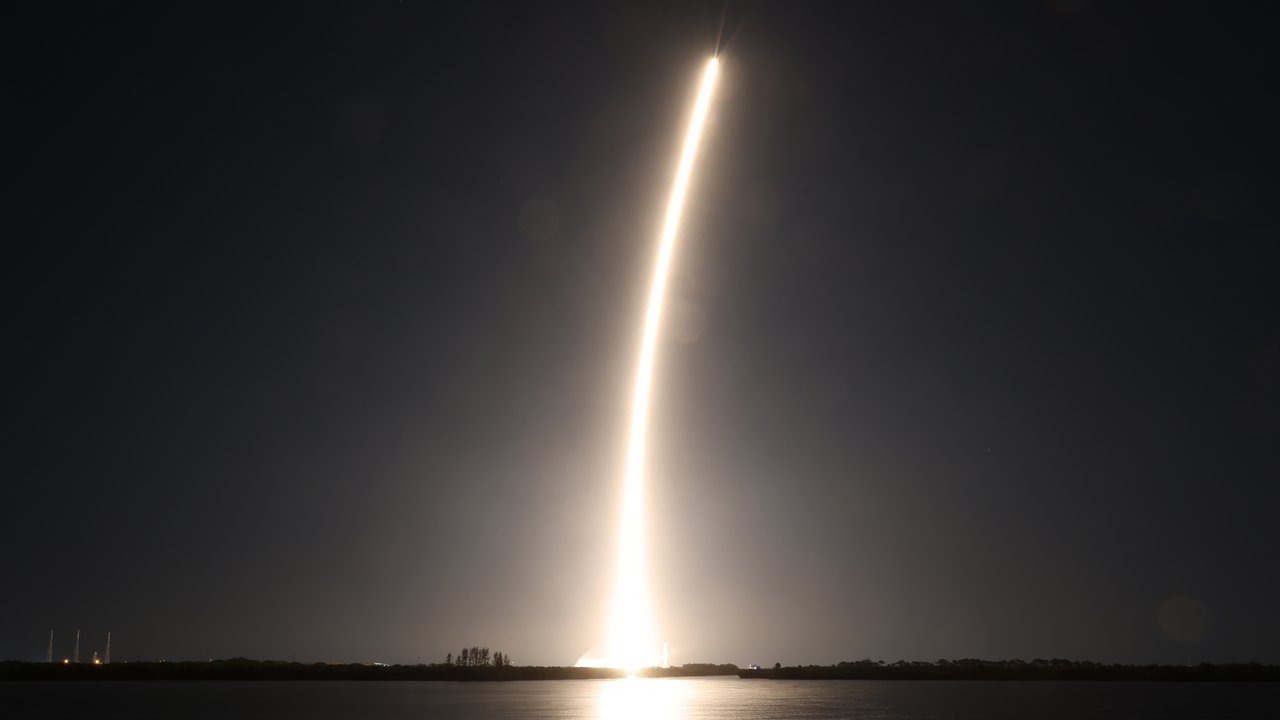While the Pacific Northwest is better known for its towering evergreens and endless stretches of coastline, Oregon now has a small but meaningful connection to the Moon. In the early hours of January 15, 2025, Firefly Aerospace’s Blue Ghost Mission 1 successfully launched from Cape Canaveral Space Force Station in Florida, carrying a suite of scientific instruments, cutting-edge technology, and one very special payload with Oregon ties—the AstroVault, a project developed in part by Quantum Aerospace, a company with deep roots in the state.
This mission, part of NASA’s Commercial Lunar Payload Services (CLPS) initiative, is aimed at advancing lunar science and exploration under the Artemis program. Now on its way to the Moon, the Blue Ghost lander is expected to touch down in the Mare Crisium region on March 2, 2025, where it will conduct a series of scientific experiments and technology demonstrations over a 14-day lunar day.
A New Chapter in Lunar Science
Space travel has always been a costly and highly specialized endeavor, but private companies like Firefly Aerospace are helping to democratize space exploration by making lunar access more affordable and frequent. Blue Ghost Mission 1 carries ten NASA-sponsored instruments designed to study the lunar surface, its subsurface composition, and how the Moon interacts with solar radiation.
“This isn’t just about landing a spacecraft on the Moon,” said Bill Weber, CEO of Firefly Aerospace, during a press conference following the launch.
“We’re creating infrastructure that will support future missions—whether for science, commerce, or eventually, human settlement.”
NASA’s Bill Nelson, speaking about the CLPS initiative, emphasized how these public-private partnerships are lowering costs while accelerating progress in lunar exploration. This mission is one of the many planned under Artemis, with the long-term goal of establishing a sustainable human presence on the Moon.
What’s Onboard the Blue Ghost Lander?
This mission is carrying a wide array of scientific payloads, including:
- Lunar Magnetotelluric Sounder (LMS): Mapping the Moon’s underground structure using electromagnetic fields.
- Lunar Instrumentation for Subsurface Thermal Exploration with Rapidity (LISTER): Measuring how heat moves through the lunar crust.
- Lunar PlanetVac (LPV): Collecting soil samples in preparation for future missions that could use lunar resources.
- Lunar Environment Heliospheric X-ray Imager (LEXI): Studying how the Sun’s radiation interacts with Earth’s magnetosphere.
- Lunar GNSS Receiver Experiment (LuGRE): Testing GPS-style navigation for use on the Moon.
- Next-Generation Lunar Retroreflectors (NGLR): Creating a precise way to measure Earth-Moon distances with lasers.
- Electrodynamic Dust Shield (EDS): Experimenting with a method to repel lunar dust—an issue that has plagued astronauts and equipment since Apollo.
But amid all the high-tech research tools sits a uniquely human element—the AstroVault, an ambitious project designed to ensure that pieces of Earth’s history, culture, and creativity remain preserved for millennia.
The AstroVault: A Piece of Oregon on the Moon
Developed by Quantum Aerospace and Space Ark Media, the AstroVault is a deep-space archival project designed to store human culture, art, music, and knowledge in an ultra-durable format that could last for thousands of years on the lunar surface. The idea is simple but profound: future generations—whether human or extraterrestrial—will be able to access a carefully curated collection of literature, history, and creativity long after the societies that created them are gone.
Lucian Knight, a mission coordinator for the AstroVault, explained its purpose in an interview leading up to the launch.
“This isn’t just a time capsule—it’s a declaration that we were here. That we explored, that we created, and that we had stories worth telling.”
While it may not be immediately obvious, Oregon has played a quiet but meaningful role in this mission. Quantum Aerospace, which had a hand in developing the AstroVault, has long been involved in space technology, and several local scientists and engineers contributed to the project. It’s a reminder that space exploration isn’t just happening in Florida, Texas, and California—Oregon is making its mark, too.
What’s Next for Blue Ghost?
Now safely on its trajectory, the Blue Ghost lander is heading toward a lunar orbit insertion maneuver on February 14, 2025. This critical step will allow the spacecraft to stabilize before attempting a soft landing on March 2, 2025. Once on the surface, the instruments will immediately get to work, transmitting valuable data back to Earth.
While the harsh environment of the Moon will cause most instruments to stop functioning after 14 days, some payloads—including the AstroVault and Next-Generation Lunar Retroreflectors—will remain permanently. These enduring artifacts will be a small but powerful human footprint on the Moon, marking this mission as more than just another research expedition.
A Small Step for Oregon, A Big Step for Space Exploration
While the Blue Ghost lander may be thousands of miles away, its mission is deeply connected to Earth—and to Oregon. As space becomes more accessible to private companies, universities, and even artists, the definition of “who gets to explore” is shifting.
“We are at the dawn of a new space era—one that isn’t limited to governments or billionaires,” said Dr. Lori Glaze, NASA’s Director of Planetary Science. “Missions like this are proof that space is becoming a shared frontier for all of us.”
The Blue Ghost mission is a testament to what can happen when cutting-edge science, engineering, and creativity intersect. It’s also a reminder that even as humanity reaches for the stars, we’re bringing pieces of Earth with us—our knowledge, our stories, and, in the case of the AstroVault, a record of what it meant to be human.




